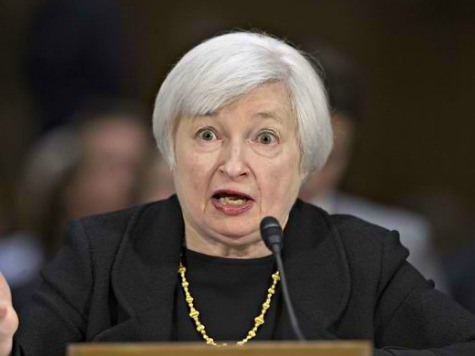Last week, Janet Yellen sent stocks diving by saying the Federal Reserve could begin raising interest rates as early as next spring–most traders and forecasters have predicted a later date.
Since the financial crisis began, the Fed has purchased U.S. Treasuries and mortgage backed securities in varying measure to boost financing for housing and corporate bonds. The benefits have run their course, and those programs are expected to end next spring.
The Fed has kept the bank overnight lending rate near zero and the question remains: when will the Fed push up that rate?
Here are five things the Fed and Yellen should do.
1. Wait for a big increase in the percentage of adults with jobs.
The Fed has abandoned a 6.5 percent unemployment rate as the threshold for considering higher rates. Rising numbers of discouraged adults have quit looking for work altogether and don’t get counted in the jobless ranks, making that statistic nearly meaningless.
Prime working age adults 25 to 54 that have a job is only 76.5 percent, down from 80.3, when the recession began and 81.8 at the beginning of the century. An alarming one out of six men is not working, and many have few prospects. That all can’t be explained by changing gender roles–critical is the tough condition of home construction and manufacturing.
An employment rate at 80 percent is a long way off, and so should be higher interest rates.
2. Wait for a much stronger housing market.
Housing prices have recovered 42 percent of the losses incurred during the recession. Demand has been boosted by investors scooping up bargain priced foreclosures but that lift is abating.
More young adults are leaving parents attics and basements. New home starts are expected to rise above 1 million units for the first time since 2007 level, but that is still less than half the pre-crisis peak.
Comparing median household incomes with median home prices, housing looks quite affordable but first time buyers are terribly burdened by student loan debt–something housing economists don’t often factor into forecasts.
Getting housing starts up to 1.5 million is a long way off and so should be raising interest rates.
3. Wait for manufacturing to improve.
Manufacturing lost 2.3 million jobs during the Great Recession and has gained back only about 600,000. The rush of Chinese goods and resurgence of Japanese autos have been greatly helped by Beijing and Tokyo artificially pushing down the prices of their currencies and exports.
The Administration has done little to pressure change in those policies, and by raising interest rates, the Fed would only push the dollar higher and make conditions worse.
Waiting for manufacturing to regain another 400,000 jobs before raising rates seems reasonable. And privately lobbying the Treasury to get tough on foreign exchange rate manipulation makes sense.
4. Worry less about stock prices.
Fed policies have given stock prices a lift, but those are not high by historical standards.
Tough economic conditions at home have not held down profits of corporate America. The Standard & Poor’s 500 earn much of their profits abroad. Since 2000 corporate earnings are up 440 percent, while stocks increased only 22 percent–much less than inflation at 43 percent.
Yellen should not comment about stock values, but quietly waiting for the S&P to catch up with inflation, or rise to about 2200 before fretting, makes sense.
5. Say a lot less.
Ben Bernanke made a big deal about offering guidance about future Fed policies to help businesses better plan investment, borrowing and hiring. Doing so effectively requires the Fed to predict with some precision conditions in the jobs and other key markets 6, 12, and 18 months from now.
They can’t do that any better than I can pick who will win the Super Bowl next year.
So fess up and let it go.
Peter Morici is an economist and professor at the University of Maryland Robert H. Smith School of Business and a widely published columnist. He tweets @pmorici1

COMMENTS
Please let us know if you're having issues with commenting.